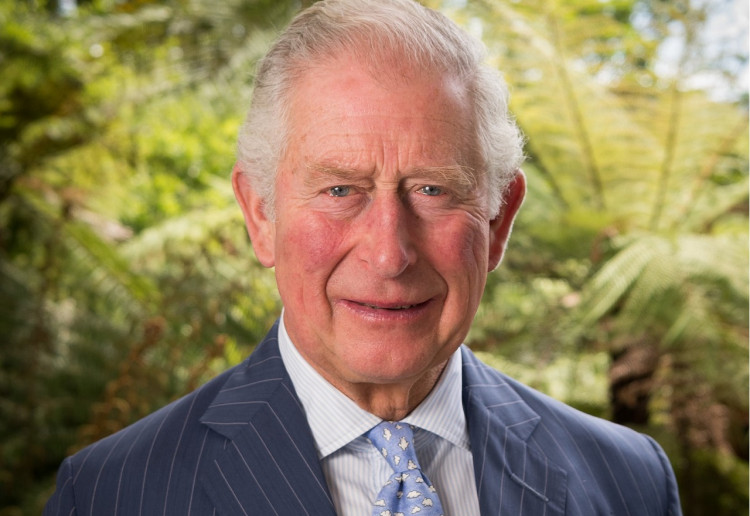King Charles III's first official portrait since his coronation, painted by renowned British artist Jonathan Yeo, has sparked a heated debate among art critics and royal enthusiasts alike. The striking red canvas, measuring an impressive 8 ½ feet by 6 ½ feet, was commissioned in 2020 to celebrate Charles' 50-year membership in The Drapers' Company, a prestigious UK charity supporting various causes.
The painting, which took several years and four sittings between 2021 and 2023 to complete, initially surprised the King with its bold color choice. "He was initially mildly surprised by the strong colour, but otherwise he seemed to be smiling approvingly," Yeo told the BBC. Despite the mixed reactions from the public and art world, the portrait received a seal of approval from Queen Camilla, who remarked, "Yes, you've got him."
One of the most striking aspects of the portrait is the King's bright red uniform, which belongs to the Welsh Guards, a regiment of the British army. Charles, who was named Regimental Colonel of the Welsh Guards in 1975, has worn this uniform during the annual Trooping the Colour ceremony. The use of red throughout the painting is a nod to Charles' royal heritage, as the color often appears in historical royal paintings.
Yeo deliberately chose to blend the King's uniform into the swirling red background, keeping Charles' face more pronounced. This artistic decision was made to allow viewers to connect with the King as a person rather than be distracted by his regalia. "As a portrait artist, you get this unique opportunity to spend time with and get to know a subject, so I wanted to minimise the visual distractions and allow people to connect with the human being underneath," Yeo explained on his website.
KING CHARLES PORTRAIT: King Charles III unveiled the first portrait of the monarch completed since he assumed the throne at Buckingham Palace Tues. The painting is a vivid image that depicts him in the bright red uniform of the Welsh Guards against a background of similar hues. pic.twitter.com/ar5I45Gbrz — Local News 8 (@localnews8) May 17, 2024
Another intriguing detail in the portrait is the small butterfly fluttering above Charles' right shoulder. The monarch butterfly, identifiable by its orange, black, and white colors, holds multiple symbolic meanings. It is believed that the butterfly was named after King William III, also known as the Prince of Orange, who ascended the English throne in the 17th century.
The inclusion of the butterfly was suggested by Charles himself, as revealed by Yeo. When asked what clues the King would like to leave for future generations, Charles responded, "What about a butterfly landing on my shoulder?" This subtle detail also pays tribute to the King's lifelong passion for environmental causes and sustainability, which he has championed for decades, often ahead of mainstream conversations.
Moreover, the butterfly serves as a metaphor for Charles' personal evolution from Prince of Wales to King during the portrait's creation. "In the context of art history, a butterfly is often the symbol of metamorphosis and rebirth, and thus also parallels the King's transition from prince to monarch during the period the portrait was created," Yeo wrote on his website.
While the portrait follows the traditional convention of depicting male monarchs in uniform, it also showcases glimpses of Charles' desired legacy. The King, who had over five decades to contemplate his first official portrait, carefully curated every aspect of the painting to project his ideal identity. The absence of royal insignia in the portrait emphasizes Charles' role as the patron of The Drapers' Company rather than his status as a monarch.






